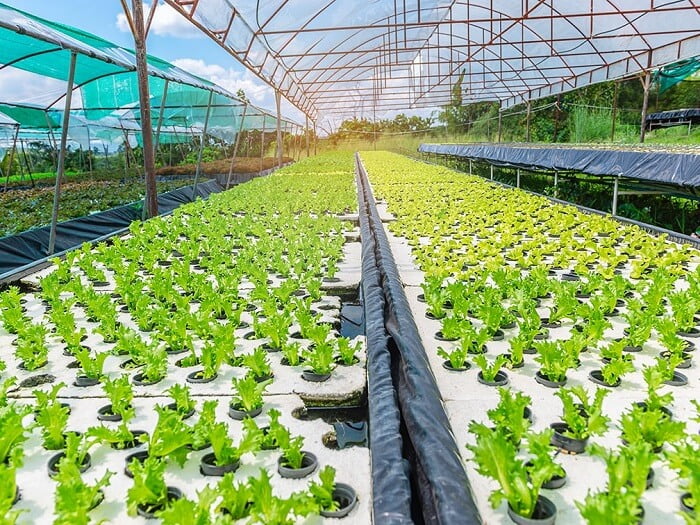From the medical-cosmetic field, aloe vera is probably known to many people beyond the circle of hobby gardeners. Because of this popularity, it can also be found in numerous garden landscapes and plant pots today. However, in order to feel comfortable away from its original home, the aloe vera places high demands on the substrate used. We will inform you about possible variants, as well as differences, as well as advantages and disadvantages of each individual variety.
Table of Contents
Aloe Vera – Soil condition
In order to find the optimal substrate for you, it is worth taking a look at the needs of aloe vera:
Their origin is probably in the dry areas of Africa. However, today it can be found in almost all subtropical and tropical areas of the world. Like many other succulents, it needs water, but it can store it for some time in the form of gel-like reservoirs in the leaves. All in all, she prefers a rather dry environment. Aloes, on the other hand, tolerate waterlogging very poorly. Natively adapted to dry environments and even periods of drought, members of this plant family lack strategies to deal with excess moisture. The same also applies to the nutrient balance. By adapting to very poor soil types, the aloe also stores nutrients in its water reservoirs. On the other hand, they cannot utilize an excessive “food supply”. Even on the contrary. Too much minerals and other nutrients can damage the roots and thus bring the plant’s energy balance to a standstill.
Overall, these properties result in a few but essential requirements for the ideal substrate:
- low in nutrients
- Kalkhaltig
- Fast drying
- Loose and sandy
- Good drainage ability
Well suited substrate
If you don’t want to use special, usually very expensive succulent or cactus soil from specialist shops, you can use more universal alternatives. These substrates meet all of the basic requirements of aloe vera. However, the differences that still exist mean that each variety has its strengths in a slightly different area and therefore a different way of handling the plants.
Earth
The hobby gardener usually understands the general term soil as a universal plant soil. This does not show any extreme expression in a certain direction, but satisfies a solid cross-section of all “normal” plant needs. However, the requirements of aloe vera differ significantly from the average, so that the assessment of “commercial” soil is somewhat different here.
Benefits:
- Nutrient supply available
- provides roots with solid support
Disadvantage:
- mostly too high water storage capacity
- in relation to low drainage capacity
- Danger of waterlogging and root rot on the aloe vera
Seramis
Just as tempo has established itself in many places as a representative term for the handkerchief, the term “seramis” is often used today to represent a whole group of artificial plant substrates. In general, these are expanded clay granules, i.e. highly porous balls made of a fired material with a high clay content. It was developed to simplify the handling of potted plants, since the expanded clay balls can store water in their pores, but are still very well drainable due to the large spaces in the bulk material.
Benefits:
- High water storage capacity
- Very good drainage ability
- Almost no risk of waterlogging
- Good storage capacity for nutrients dissolved in the irrigation water
Disadvantage:
- No intrinsic nutritional content whatsoever
- Comparatively little support for roots due to large granulate particles and dense surface
Sand
As the last of the common substrates, sand again comes up with its very own characteristics. Despite the wide range of material origins of the individual grains of sand, the properties of the conglomerate sand can be described as extremely homogeneous:
Benefits:
- Very high drainage ability
- No risk of waterlogging
- No oversupply of nutrients possible
Disadvantage:
- Very little to no nutritional content
- Little support for roots
- No water storage capacity
Differences between the substrates and the optimal soil
Now the question arises as to which of the named materials is best suited for aloe vera. Because the eye-catching differences are quite considerable. Garden soil in particular deviates greatly from the parameters of sand and seramis, which are closer together. But what is the right thing to do now? On the one hand, there shouldn’t be too much water and nutrients, on the other hand, you can’t do without it either. The optimum is therefore somewhere in the middle:
Mix garden soil with sand or clay granules to keep a certain amount of water on the one hand and to consistently drain off waterlogging on the other. The soil provides a basic supply of nutrients, while the other components prevent an oversupply. Mixing ratios of:
- Maximum ⅓ earth to ⅔ sand
- Up to ¼ earth to ¾ clay granules (because of the granules’ own storage capacity)
- ALTERNATIVE: maximum ⅓ earth to ⅔ other aggregates that cannot be stored, such as sand-split mixtures, broken slate, gravel, etc.

